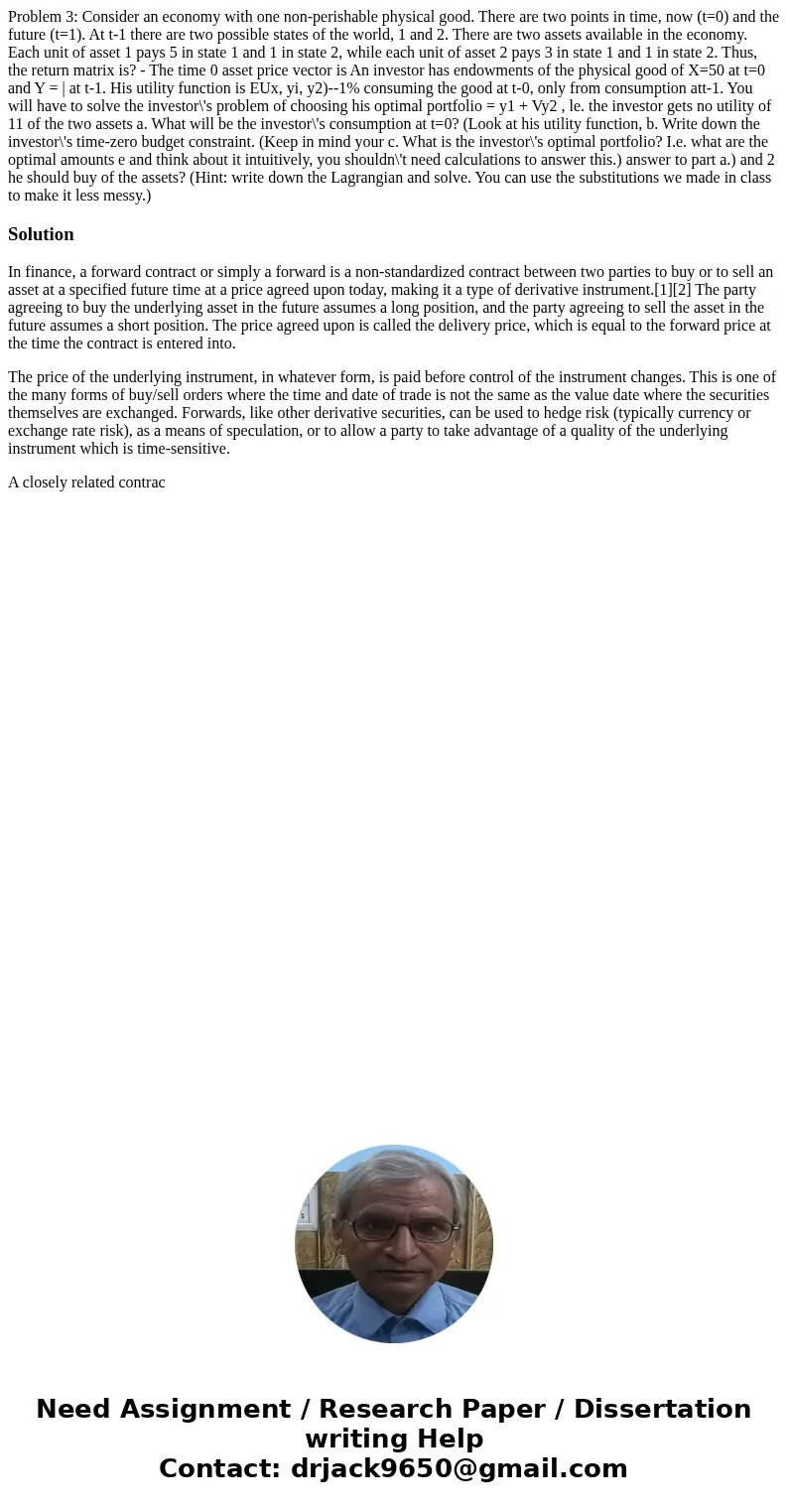Problem 3: Consider an economy with one non-perishable physical good. There are two points in time, now (t=0) and the future (t=1). At t-1 there are two possible states of the world, 1 and 2. There are two assets available in the economy. Each unit of asset 1 pays 5 in state 1 and 1 in state 2, while each unit of asset 2 pays 3 in state 1 and 1 in state 2. Thus, the return matrix is? - The time 0 asset price vector is An investor has endowments of the physical good of X=50 at t=0 and Y = | at t-1. His utility function is EUx, yi, y2)--1% consuming the good at t-0, only from consumption att-1. You will have to solve the investor\'s problem of choosing his optimal portfolio = y1 + Vy2 , le. the investor gets no utility of 11 of the two assets a. What will be the investor\'s consumption at t=0? (Look at his utility function, b. Write down the investor\'s time-zero budget constraint. (Keep in mind your c. What is the investor\'s optimal portfolio? I.e. what are the optimal amounts e and think about it intuitively, you shouldn\'t need calculations to answer this.) answer to part a.) and 2 he should buy of the assets? (Hint: write down the Lagrangian and solve. You can use the substitutions we made in class to make it less messy.)
In finance, a forward contract or simply a forward is a non-standardized contract between two parties to buy or to sell an asset at a specified future time at a price agreed upon today, making it a type of derivative instrument.[1][2] The party agreeing to buy the underlying asset in the future assumes a long position, and the party agreeing to sell the asset in the future assumes a short position. The price agreed upon is called the delivery price, which is equal to the forward price at the time the contract is entered into.
The price of the underlying instrument, in whatever form, is paid before control of the instrument changes. This is one of the many forms of buy/sell orders where the time and date of trade is not the same as the value date where the securities themselves are exchanged. Forwards, like other derivative securities, can be used to hedge risk (typically currency or exchange rate risk), as a means of speculation, or to allow a party to take advantage of a quality of the underlying instrument which is time-sensitive.
A closely related contrac

 Homework Sourse
Homework Sourse